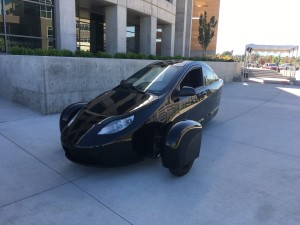Elio Motors Momentum v170

This week we take a look at several late summer driving trends, including what to expect when driving this Labor Day weekend and the aging American fleet.
Continued on Page 2
*MSRP excludes destination/delivery charges, taxes, title, registration, and options/installation.
Certain statements in this email including, but not limited to, statements related to anticipated commencement of commercial production, targeted pricing and performance goals, and statements that otherwise relate to future periods are forward-looking statements. These statements involve risks and uncertainties, which are described in more detail in the Company’s periodic reports filed with the SEC, specifically the most recent reports which identify important risk factors that could cause actual results to differ from those contained in the forward-looking statements. Forward-looking statements are made and based on information available to the Company on the date of this email. Elio Motors assumes no obligation to update the information in this email.
Elio Motors 2942 North 24th Street Suite 114-700 Phoenix, AZ 85016 US


This week we take a look at several late summer driving trends, including what to expect when driving this Labor Day weekend and the aging American fleet.
Continued on Page 2
*MSRP excludes destination/delivery charges, taxes, title, registration, and options/installation.
Certain statements in this email including, but not limited to, statements related to anticipated commencement of commercial production, targeted pricing and performance goals, and statements that otherwise relate to future periods are forward-looking statements. These statements involve risks and uncertainties, which are described in more detail in the Company’s periodic reports filed with the SEC, specifically the most recent reports which identify important risk factors that could cause actual results to differ from those contained in the forward-looking statements. Forward-looking statements are made and based on information available to the Company on the date of this email. Elio Motors assumes no obligation to update the information in this email.
Elio Motors 2942 North 24th Street Suite 114-700 Phoenix, AZ 85016 US


